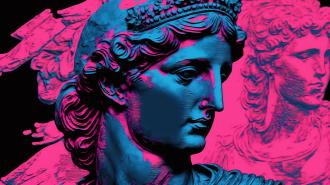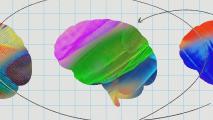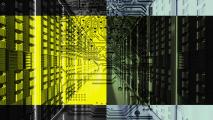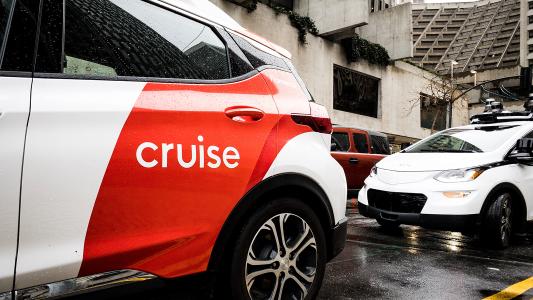Will GPTs swallow NFTs?
Over the past few months, the world has witnessed the dazzling capabilities of GPTs (“Generative Pretrained Transformers”), which seem to become more impressive by the day. One of their most revolutionary breakthroughs has been the ability to create images — artworks and “photographs” — based on text prompts to GPT programs, such as DALL-E, Midjourney, and Stable Diffusion. Anyone can now become a visual artist by using nothing more than text.
GPTs — including ChatGPT — are not without controversy. Copyright lawsuits have already been filed against several companies offering text-to-image generators. Technologists trained ChatGPT using databases that include millions of copyrighted images produced by artists, so that the AI can generate new works. The lawsuits allege that both this AI training and the AI generation of substantially similar works constitute copyright infringement. Critics have also raised concerns about privacy — including the alleged use of personal data, such as people’s photographs on social media, in the training databases — and to job displacement in many sectors, including the arts and design.
Anyone can now become a visual artist by using nothing more than text.
While the courts and legislatures will confront these controversies, how will the widespread use of AI text-to-image generators affect an art world reshaped by NFTs (non-fungible tokens)? In a short time, NFTs created an entirely new market for digital art, with a boom of $27 billion in sales in 2021. Sotheby’s and Christie’s auction houses capitalized on this new market and sold $250 million worth of artwork NFTs in that year alone.
NFTs are computer programs that create virtual ownership. Just as the software in smartphones creates virtual keyboards, the NFT creates a virtual embodiment of subject matter in a way likened to a token (or virtual twin) of the subject matter. NFTs solved the longstanding problem for digital artworks — namely, they can be easily reproduced in infinite copies. Because each token is unique, with its provenance recorded on blockchain, the copies don’t substitute for NFTs. Indeed, the copies may even help to promote the artwork by making it more well-known. NFTs provide great utility for artists by “providing standardized mechanisms for managing the provenance, payment, trading and distribution aspects, and possibilities to implement mechanisms such as [resale] royalties,” the AI artist Roope Rainisto explained.
NFTs created a market open to all artists.
This shift to virtual ownership through “tokens” — what I call Tokenism — in the 21st Century is as every bit as revolutionary as Cubism’s shift from a single, linear perspective to multiple perspectives (embodied in “cubes”) in the 20th Century. Both toppled conventions — Cubism in perspective, Tokenism in ownership — and opened vast new opportunities for artists.
Not only did NFTs spawn a new market for digital art, it did so in a decentralized way by bypassing the gatekeepers of the art establishment — the galleries, museums, and auction houses. NFTs created a market open to all artists. As Rainisto, who is based in Finland, stated, “How would have a relatively unknown digital artist from Helsinki, Finland ever ‘become successful’ with their art. Through traditional art galleries? It would never have happened, not in a million years. The gatekeeping aspects have dramatically shifted.”
But will GPTs now make NFTs obsolete? If everyone can become a visual artist by typing a few words, the supply of AI art will grow dramatically. On social media, where people constantly share their latest AI creations, including their prompts, it already has. Midjourney even uses a social network on Discord so creators can see, in real time, the prompts and images they and others create. Midjourney has a new “describe” function that analyzes any image and gives you a prompt to recreate it. The images created on Midjourney are known for their distinctive “Midjourney look.” Why would anyone buy an NFT for AI art that one can create oneself?
Many creators using GPTs are pursuing paths other than becoming NFT artists.
No doubt, GPTs will dramatically expand the pool of visual creators and increase the competition among artists to stand out. But it’s not likely to curtail the use of NFTs by artists or dampen the market for art NFTs.
It’s also important to recognize that many creators using ChatGPT, for example, are pursuing paths other than becoming NFT artists, such as graphic designers, brand consultants, and social media influencers. So, the increased competition among NFT artists may not be as dramatic as what appears on first blush.
What could drive more AI content creators to adopt NFTs is the Copyright Office’s ruling that the Midjourney-derived images for Kris Kashtanova’s graphic novel were not copyrightable because “users are not the ‘authors’ for copyright purposes of the images the technology generates.” If the courts embrace the ruling, AI creators might adopt NFTs as an alternative source of income.
GPTs are not likely to curtail the use of NFTs by artists or dampen the market for art NFTs.
For AI artists who sell NFTs, text-to-image generators are just one tool in the toolkit. Artists experiment — to develop their own artistic styles through a variety of techniques. Even if GPT-based platforms end up producing a banal mish-mash of similar artworks, that will only heighten the need for AI artists to sharpen their skills and figure out how their artworks can stand out. Artists were already doing so with other AI tools before GPTs. For example, the artist Jenni Pasanen uses AI tools with her own digital painting to produce stunning artworks. Another prominent AI artist Claire Silver described to NPR her own experimentation with various techniques, including hand painting and training of AI with her own database.
“In the past 10 years we have experienced various forms of AI such as GANs, Deep Dream, and now some very advanced visual-text-to-image generators, which open unprecedented possibilities to create images,” the digital art consultant Georg Bak explained. “I like to compare the latest developments with the invention of photography and cameras in the 19th Century. Suddenly everyone was able to create images and people at that time thought that this was the end of painting.” It wasn’t.
As leading art institutions acquire NFTs, other institutions will follow.
Even today, smartphone cameras didn’t end photography as a genre of fine art. So too, AI won’t end NFTs. “There are fine art photographers who still sell in the traditional world and also have their images minted in NFT,” Ada Crow, an AI artist, photographer, and art historian, explained. “I think the NFT market is here to stay and the ‘traditional’ market is already starting to introduce it in museums.”
Indeed, Centre Pompidou in Paris and the Los Angeles County Museum of Art have announced acquisitions of NFTs for their permanent collections. The Museum of Modern Art’s recent exhibition of AI artist Refik Anadol’s Unsupervised mesmerized throngs of visitors. As these leading art institutions acquire NFTs, other institutions will follow.
We mustn’t forget: buyers of NFTs are investors. According to a Hiscox survey, 95 percent of NFT buyers who spend $25,000 in a year do so for the investment. The aesthetic of the art takes a backseat. The investment potential boils down to the artist’s reputation and network — a principle that has long prevailed in the traditional art world as well, according to the leading art market economist Magnus Resch. We already understand this truism. Imagine that the late Andy Warhol created an AI image of a soup can and sold it as an NFT. Even if others can generate the same AI artwork, Warhol’s would command far more value than anything you or I created.
“Museums can reach a much wider audience through exhibitions in the metaverse.”
Georg Bak
AI and NFTs are, in fact, complementary technologies. Together, they accelerate the transformation of the art world to digital art and more immersive, virtual experiences. As a study by the Art Newspaper showed, visitors to the leading art museums have not returned to their pre-pandemic levels. To stay relevant, museums must adapt. Identifying the profound societal transformation with AI and digital technologies, the researchers Tula Giannini and Jonathan Bowen concluded, “Museums will need to be more prepared than ever to adapt to unabated technological advances set in the midst of cultural and social revolution.”
The William Paley foundation even auctioned 29 artworks, including by Picasso, Renoir, and Rodin, that were entrusted to MoMA, to raise funds for the museum to increase its digital art collection and potentially develop its own streaming platform. That sale is driven by the recognition that profound societal transformations accelerated by the pandemic have altered people’s expectations in many aspects of their lives, which are increasingly virtual and mediated through screens. As The Atlantic’s Megan Garber put it, “We live our lives, willingly or not, within the metaverse.”
“Real live experiences with a virtual component is in my opinion the right way for museums to go,” Bak explained. “Museums can reach a much wider audience through exhibitions in the metaverse. It is undeniable that digital natives are more attached to NFTs, VR, and large media installations as well as live-minting experiences and digital communities and interactions.”
The explosion of digital and AI art, along with the new market created by NFTs, will usher in a Virtual Renaissance that defines 21st century art.
Edward Lee is the author of Creators Take Control: How NFTs Revolutionize Art, Business, and Entertainment (Harper Business 2023).
We’d love to hear from you! If you have a comment about this article or if you have a tip for a future Freethink story, please email us at [email protected].




